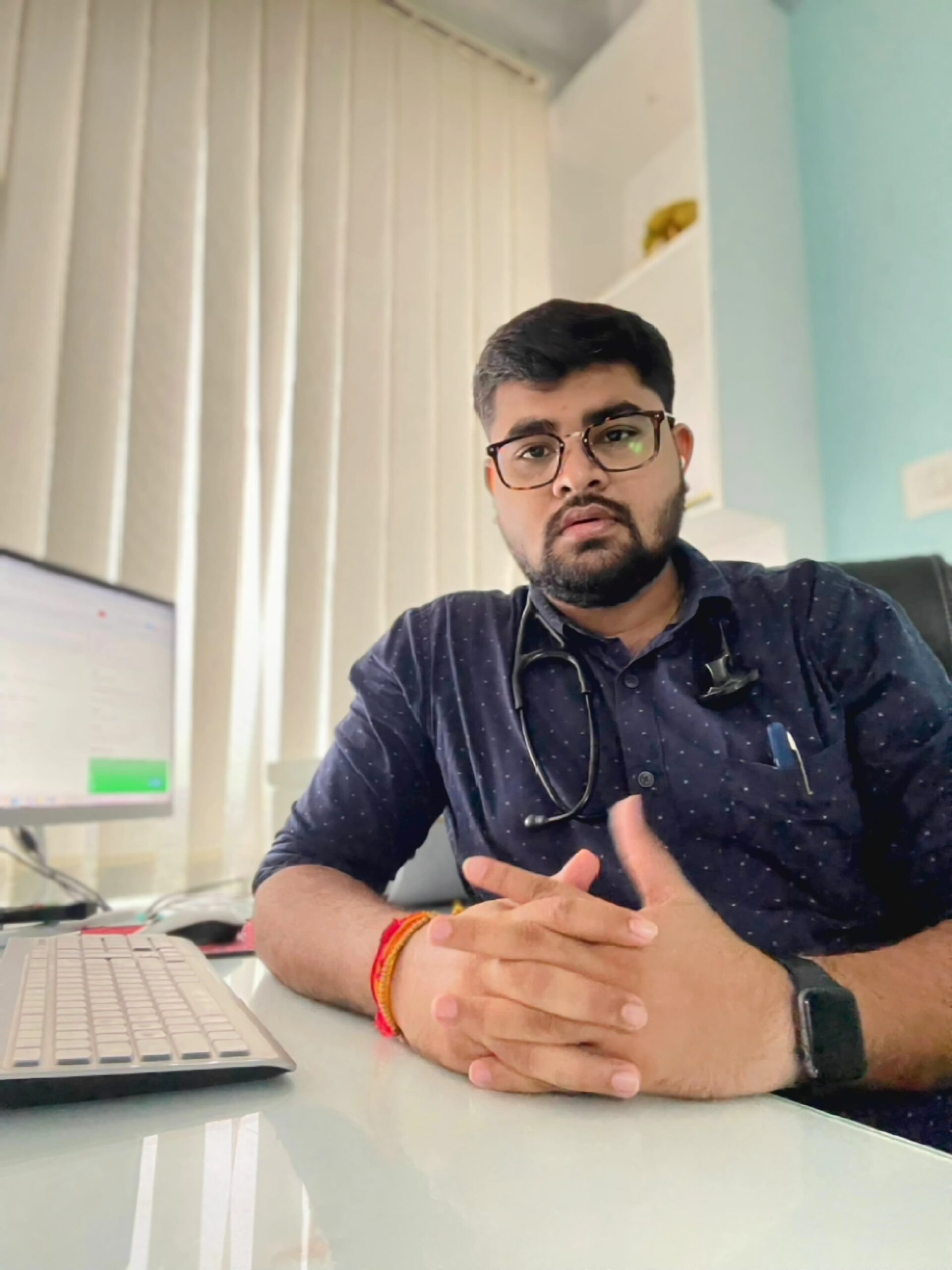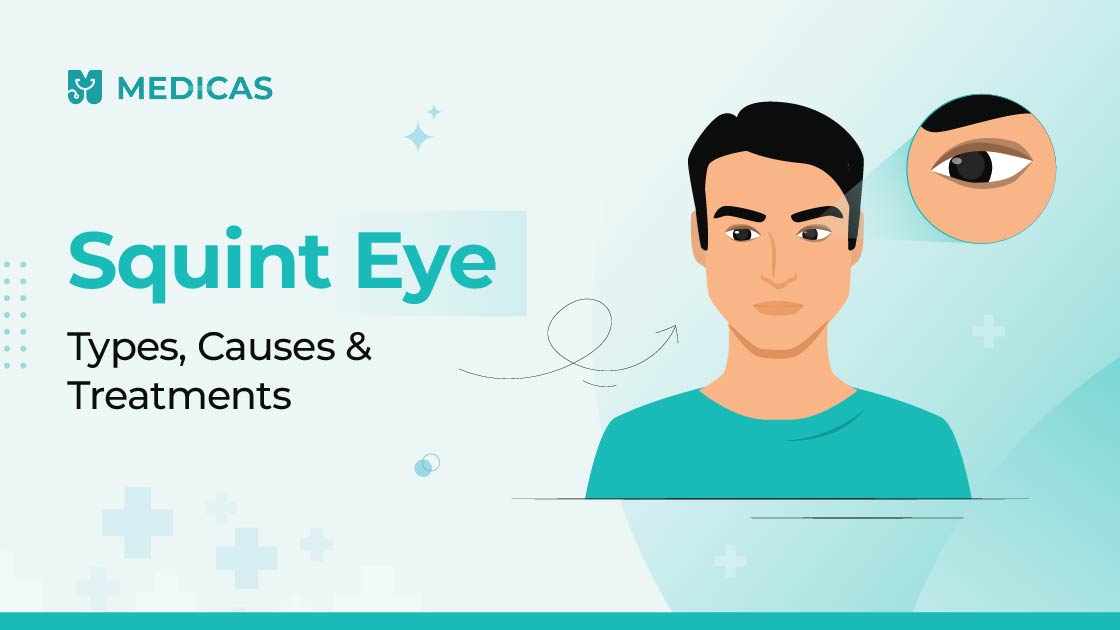A squint eye, also known as strabismus, is a condition where the eyes don’t align properly, pointing in different directions. This misalignment can affect vision and depth perception, impacting daily life. Early detection and appropriate squint eye treatment are crucial, especially squint eye in children, to prevent long-term vision problems. Understanding the squint causes and available squint surgery options can help individuals make informed decisions about their eye care.
What is a Squint Eye?
A squint, or strabismus, occurs when your eyes don’t look in the same direction at the same time. One eye may look straight ahead, while the other turns inward, outward, upward, or downward. This condition can be constant or intermittent, affecting people of all ages, but it’s most common in young children. Seeking timely squint eye correction is essential to prevent vision deterioration.
Difference Between Lazy Eye and Squint
While often used interchangeably, lazy eye vs squint are distinct conditions. A squint refers to the misalignment of the eyes, while a lazy eye (amblyopia) is a condition where vision in one eye doesn’t develop properly, often due to a squint. Untreated squint can lead to a lazy eye, making early intervention crucial. If you are looking for best treatment for squint eye in adults, please continue reading.
Normal Vision vs. Squint Vision
In normal vision, both eyes focus on the same point, sending a single, clear image to the brain. With a squint, each eye focuses on a different point, resulting in two different images being sent to the brain. This can cause double vision, confusion, or the brain may suppress the image from the weaker eye, leading to vision loss in that eye.
Why is it Important to Treat Squint Early?
Early squint eye treatment is critical, especially in children. The visual system develops rapidly in childhood, and a squint can disrupt this development. If left untreated, it can lead to permanent vision loss in one eye (lazy eye), reduced depth perception, and social or emotional difficulties. Early treatment offers the best chance for correcting the squint and restoring normal vision.
Types of Squint Eye
Squints are classified based on the direction of the eye turn. Understanding the specific type is vital for determining the most effective treatment approach. Consulting a doctor online can provide insights into the appropriate management plan.
Esotropia (Inward Turned Eye)
Esotropia is a type of squint where one or both eyes turn inward, towards the nose. This is the most common type of squint, especially in children. It can be present from birth (congenital) or develop later in life. Esotropia often leads to double vision or the suppression of vision in one eye.
Exotropia (Outward Turned Eye)
Exotropia is characterized by one or both eyes turning outward, away from the nose. This type of squint may be intermittent, occurring only sometimes, such as when a person is tired or daydreaming. In some cases, exotropia can become constant over time. How to fix squint eye naturally may be a common search for patients who suffer from this condition.
Vertical Squint and Intermittent Squint
Vertical squints involve one eye turning upward (hypertropia) or downward (hypotropia) relative to the other eye. Intermittent squints, as the name suggests, are not constant; the eye alignment is normal some of the time. These types can be more challenging to diagnose and may require specific tests.
Causes of Squint Eye
Squints can arise from various factors. Identifying the underlying cause is important in guiding the best course of action. If you are suffering from a squint eye, you can always get an online doctor consultation for squint.
Congenital Causes
Some babies are born with a squint due to genetic factors or problems with eye muscle development. Congenital squints are usually noticeable within the first few months of life. Early detection and treatment are particularly important in these cases to prevent vision problems from developing.
Neurological or Muscle Issues
Squints can also be caused by neurological conditions that affect the nerves controlling eye movements or by problems with the eye muscles themselves. Conditions like cerebral palsy, stroke, or head injuries can lead to a squint. Muscle imbalances or weakness can also disrupt eye alignment.
Lifestyle and External Factors
In some instances, lifestyle or external factors may contribute to the development of a squint. Prolonged screen time, poor posture, or uncorrected refractive errors (like farsightedness) can sometimes exacerbate a tendency to squint. While these factors are rarely the sole cause, they can play a role.
Symptoms of a Squint Eye
The most obvious symptom of a squint is the visible misalignment of the eyes. Other symptoms may include double vision, reduced depth perception, eye strain, headaches, and tilting the head to see properly. Children with a squint may not complain of double vision, as their brains may suppress the image from one eye. If you are looking for squint eye treatment without surgery, continue reading.
Diagnosis and Eye Tests for Squint
A comprehensive eye examination is necessary to diagnose a squint. This typically includes assessing visual acuity, eye alignment, and eye movements. The doctor may use various tests, such as the cover test (where one eye is covered to see how the other eye moves) and tests to measure the degree of misalignment. Early diagnosis is critical for effective treatment.
Treatment Options for Squint Eye
Several treatment options are available for squints, depending on the type and severity of the condition. The primary goals of treatment are to straighten the eyes, restore normal vision, and improve depth perception. Treatment strategies might vary depending on the type and severity of the squint.
Glasses or Contact Lenses
For squints caused by refractive errors like farsightedness, glasses or contact lenses may be prescribed to correct the vision and help align the eyes. In some cases, special prism lenses can be used to help the eyes work together and reduce double vision. You can always Book Lab Test to know more about your refractive errors
Eye Exercises and Patching
Eye exercises and patching are often used to treat lazy eye associated with a squint. Patching involves covering the stronger eye to force the weaker eye to work harder, thereby improving vision. Eye exercises can help strengthen eye muscles and improve coordination between the eyes. You can also read about Also Read: 5 superfoods to improve child’s eyesight to improve your child’s eyesight
Vision Therapy for Squint
Vision therapy is a structured program of visual activities designed to improve eye alignment, eye movement control, and visual processing skills. It is often used in conjunction with other treatments, such as glasses or patching. Vision therapy can be particularly helpful for intermittent squints and convergence insufficiency.
Squint Eye Surgery
Squint surgery is often recommended when other treatments are not sufficient to correct the eye misalignment. The surgery involves adjusting the eye muscles to straighten the eyes. The goal is to improve eye alignment and restore binocular vision (the ability to use both eyes together).
What Happens During Surgery?
During squint surgery, the surgeon makes a small incision in the conjunctiva (the clear membrane covering the white part of the eye) to access the eye muscles. The muscles are then either tightened or loosened, depending on the direction of the squint. The surgery is typically performed under general anesthesia, especially in children.
Recovery and Post-Surgery Care
Squint surgery recovery time is relatively short. Most people can return to their normal activities within a few days. Eye drops are usually prescribed to prevent infection and reduce inflammation. Follow-up appointments with the eye doctor are necessary to monitor healing and ensure proper eye alignment.
Risks and Benefits of Surgery
Squint surgery is generally safe and effective, but like any surgery, it carries some risks. These may include infection, bleeding, double vision, or under-correction or over-correction of the squint. The benefits of surgery include improved eye alignment, better vision, and enhanced self-esteem. Before opting for surgery, it’s crucial to discuss the potential risks and benefits with your eye doctor.
When to See a Doctor for Squint
If you notice that your eyes are misaligned, or if you experience symptoms like double vision or eye strain, it’s important to see an eye doctor for a comprehensive evaluation. Early diagnosis and treatment can prevent vision problems from worsening. You can book appointment with me or find an ophthalmologist near you for more detailed analysis.
Book an Online Consultation for Squint Eye
If you’re concerned about a squint and want to seek professional advice, consider booking an Online Doctor Consultation. This allows you to discuss your concerns with an eye specialist from the comfort of your home and receive guidance on the next steps.
Frequently Asked Questions
- What is the best treatment option for squint eye?
The best treatment option for squint eye depends on the type and severity of the squint, as well as the patient’s age and overall health. Options include glasses, eye exercises, patching, vision therapy, and surgery. A comprehensive eye exam is necessary to determine the most appropriate treatment plan.
- How much does squint eye surgery cost in India?
The cost of squint eye surgery in India can vary depending on the hospital, the surgeon’s experience, and the complexity of the case. Generally, it can range from INR 20,000 to INR 60,000 or more. It’s best to consult with an eye surgeon to get an accurate estimate.
- Can I consult an eye specialist online for squint?
Yes, you can consult an eye specialist Online Doctor Consultation. This is a convenient way to discuss your concerns, get a preliminary assessment, and receive guidance on whether further in-person evaluation is needed.
- How to book an online doctor appointment for squint eye treatment?
To book an online doctor appointment for squint eye treatment, you can visit online healthcare platforms or the websites of eye clinics that offer telemedicine services. Simply search for an ophthalmologist, select a convenient time slot, and book your appointment. If you are looking for how to fix squint eye naturally, you can ask the doctor for more information.
Disclaimer
Medical Advice: The information provided in this blog post is for educational purposes only and should not be considered as a substitute for professional medical advice, diagnosis, or treatment. Always consult with a qualified healthcare professional for personalized guidance regarding your specific medical condition.
Accuracy of Information: While we strive to provide accurate and up-to-date information, the field of medicine and viral fevers is constantly evolving. The content in this blog post may not reflect the most current research or medical guidelines. Therefore, it is advisable to cross-check any information provided with reliable sources or consult a healthcare professional.
Individual Variations: The symptoms, causes, treatment options, and preventive measures discussed in this blog post are general in nature and may not apply to everyone. It is important to remember that each individual’s situation is unique, and personalized medical advice should be sought when making healthcare decisions.
External Links: This blog post may contain links to external websites or resources for additional information. However, we do not endorse or have control over the content of these third-party websites. Accessing these links is done at your own risk, and we are not responsible for any consequences or damages that may arise from visiting these external sources.
Results May Vary: The effectiveness of treatment options or preventive measures mentioned in this blog post may vary from person to person. What works for one individual may not work the same way for another. It is essential to consult with a healthcare professional for personalized advice tailored to your specific needs.

Dr. Dhruvil Patel is a general practitioner with experience in primary care and general medicine. Based in Vadodara, Gujarat, he is dedicated to providing compassionate, evidence-based care for a variety of health concerns. With an MBBS degree and registration under the Gujarat Medical Council, he blends clinical expertise with a patient-first approach to everyday healthcare.


